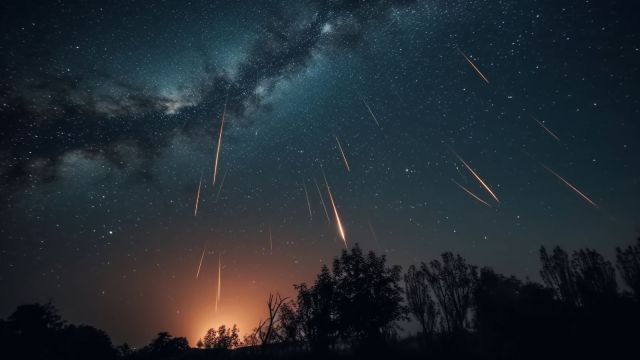As we step into 2025, the world is set to experience the first meteor shower of the year — the Quadrantid meteor shower. This event, occurring annually in early January, is one of the most intense meteor displays, though its peak lasts only a few hours.
Overview of the Quadrantid Meteor Shower
The Quadrantid meteor shower is a rare yet spectacular celestial event that occurs every year in early January. It is known for its brief but intense peak, offering a remarkable meteor display for those fortunate enough to witness it.
- Peak Duration: A few hours
- Meteor Frequency: 60 to 120 meteors per hour during peak activity
- Visibility: Depends on location and timing
Origins of the Quadrantids
The Quadrantids originate from the northeast corner of the Boötes constellation. The name “Quadrantids” is derived from the now-obsolete constellation Quadrans Muralis, named by French astronomer JJ Lalande in 1975. The first recorded observation of the meteor shower occurred in the 1830s by Belgian astronomer Adolphe Quetelet.
The Quadrantid meteor shower is believed to have emerged from asteroid 2003 EH1, which is thought to be a fragment of an extinct comet that broke apart in 1490-91.
Viewing Conditions for 2025
This year, the viewing conditions are expected to favor North America, especially for those in the western regions. Observers in areas like Mississippi will have the best chances to see the shower during the pre-dawn hours. The absence of moonlight will make this year’s meteor display particularly spectacular, as Earth’s forward-facing side will hit the meteors at high speed, causing them to shine brightly.
- Best Viewing Areas: North America (especially western regions), Canada, Northern Europe, Russia, China, Japan, and Korea
- Best Time to Watch: Before dawn on January 4, 2025
Last Year’s Quadrantid Meteor Shower
In 2024, the Quadrantid meteor shower was active between December 28, 2023, and January 12, 2024. The peak occurred on January 3-4, and observers were able to witness up to 120 meteors per hour during this time.
Multiple-Choice Questions (MCQs):
1. When does the Quadrantid meteor shower occur each year?
a) Late December
b) Early January
c) Mid-February
d) Late November
Answer: b) Early January
2. How long does the peak of the Quadrantid meteor shower last?
a) A few days
b) A few hours
c) A few weeks
d) A few minutes
Answer: b) A few hours
3. From which constellation does the Quadrantid meteor shower originate?
a) Orion
b) Boötes
c) Leo
d) Gemini
Answer: b) Boötes
4. Who first observed the Quadrantid meteor shower?
a) JJ Lalande
b) Adolphe Quetelet
c) Galileo Galilei
d) Johannes Kepler
Answer: b) Adolphe Quetelet
5. What is believed to be the source of the Quadrantid meteor shower?
a) Comet Halley
b) Asteroid 2003 EH1
c) Comet Neowise
d) Asteroid 1998 KW4
Answer: b) Asteroid 2003 EH1
6. What is the best time to observe the Quadrantid meteor shower in 2025?
a) After sunset on January 3
b) Before dawn on January 4
c) Midday on January 4
d) Evening on January 5
Answer: b) Before dawn on January 4
7. Which of the following regions is expected to have the best viewing conditions for the Quadrantid meteor shower in 2025?
a) Australia
b) North America (especially western regions)
c) Africa
d) South America
Answer: b) North America (especially western regions)
